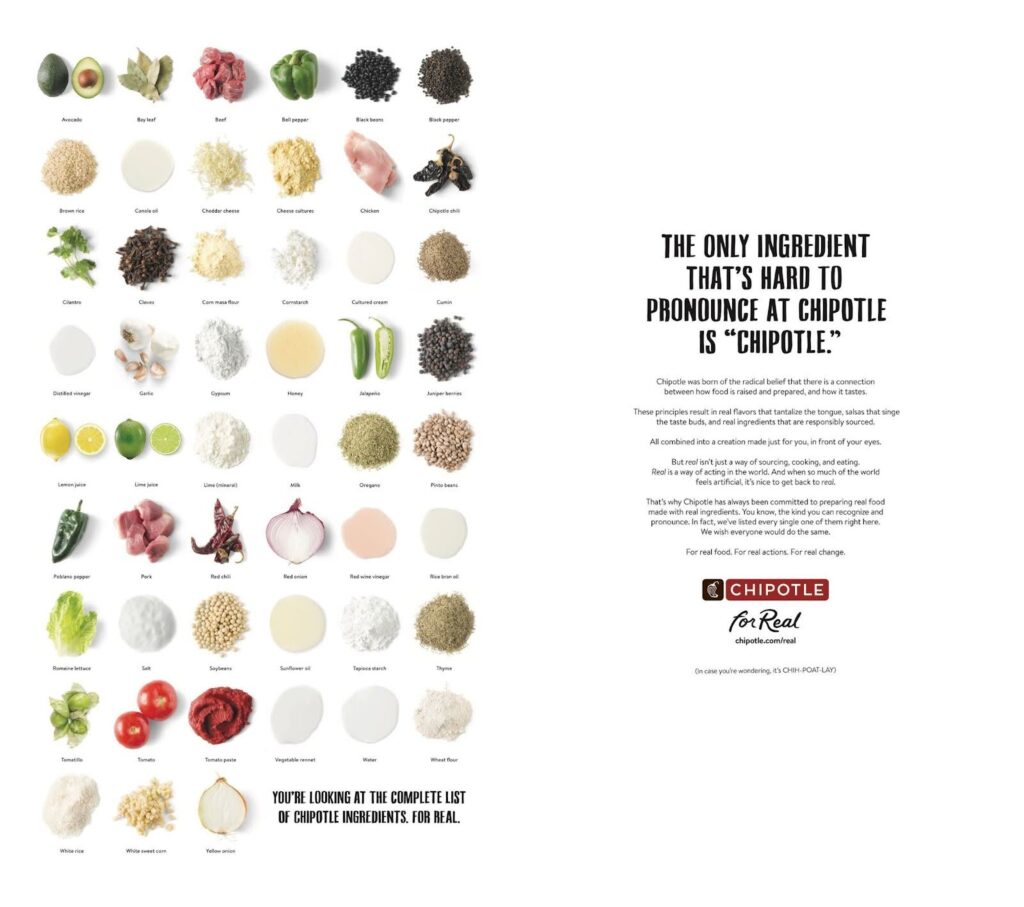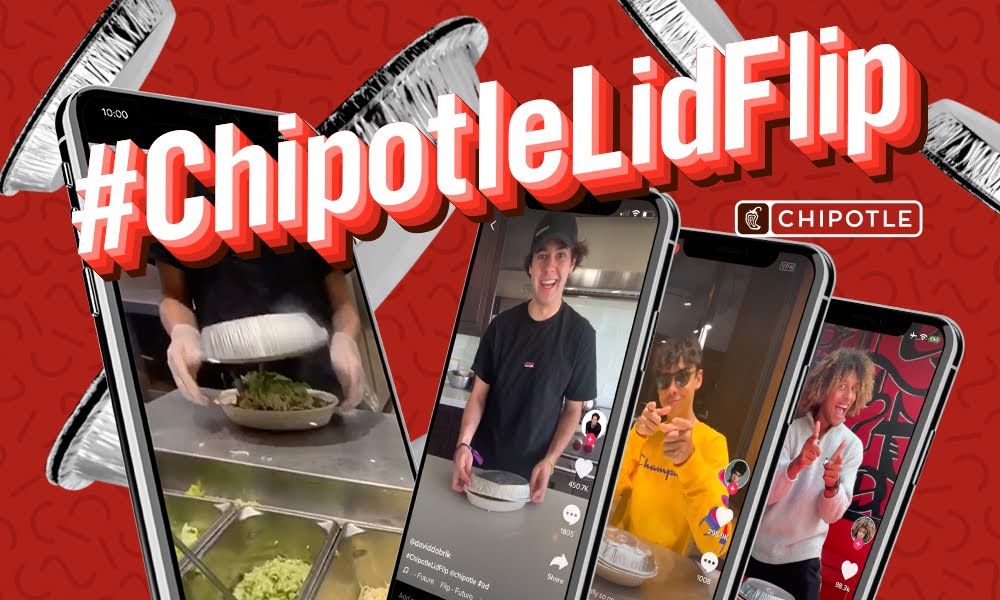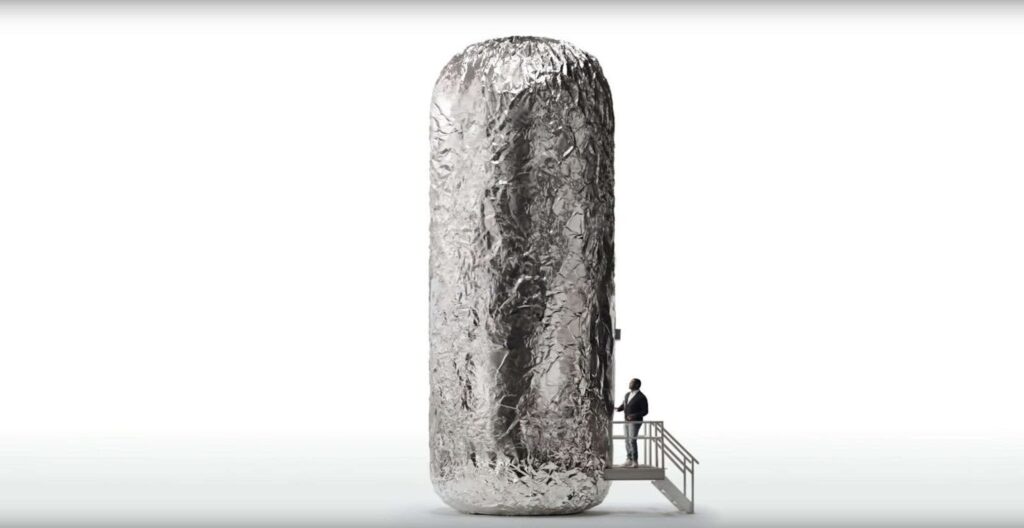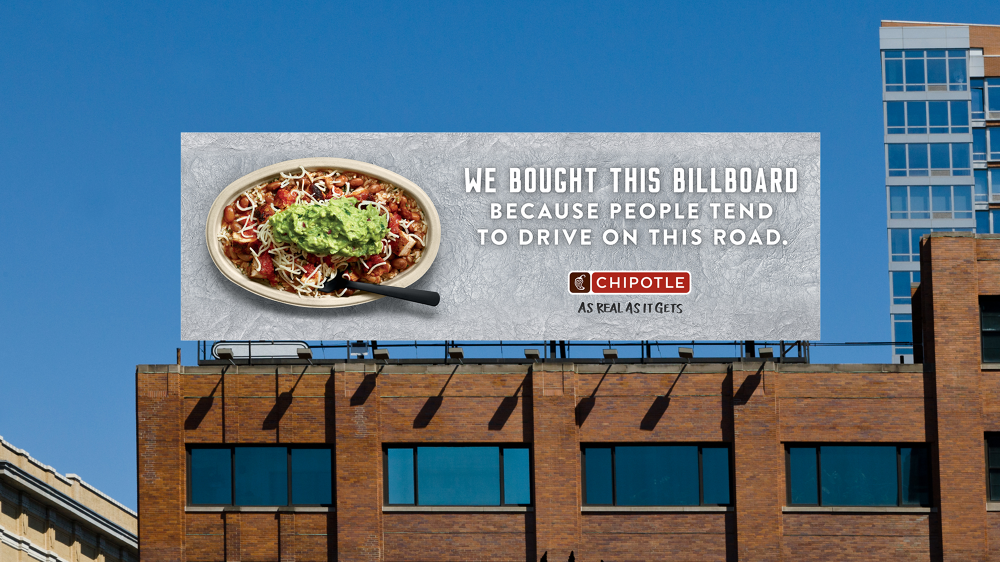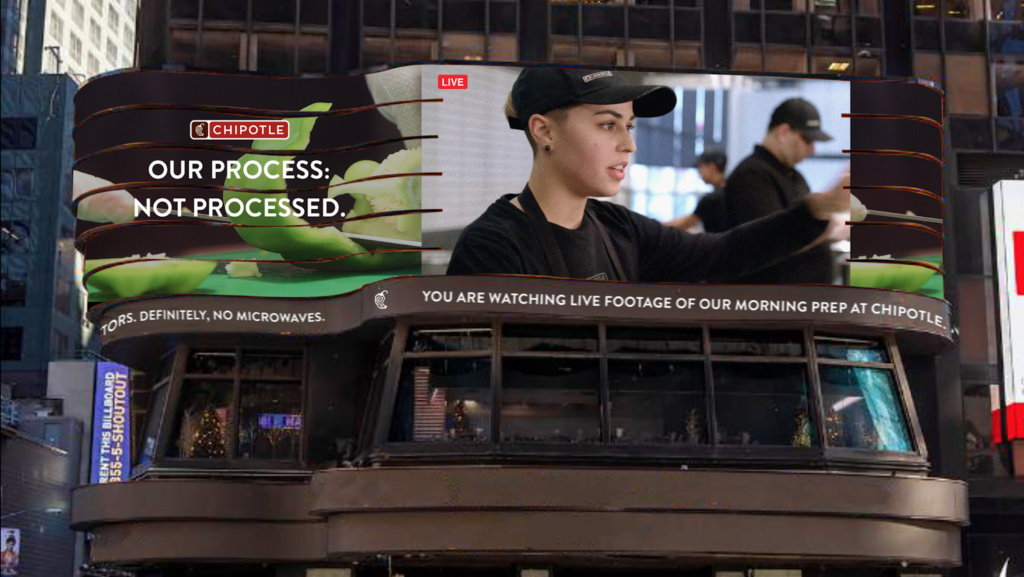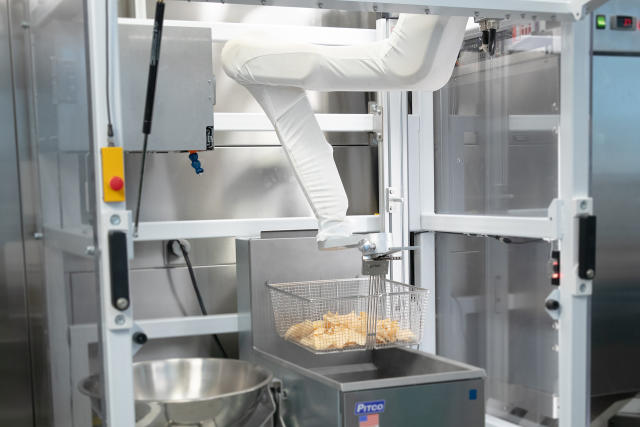- How Chipotle Began
- Who is their target market?
- What Makes Chipotle's Branding So Successful?
- Notable Campaigns
- Sustainability
- Advanced Technology Integrations
- Enhance Your Marketing Strategy With MarcomCentral
Get news, updates, and insights delivered straight to your inbox.
The Brand Story: Chipotle
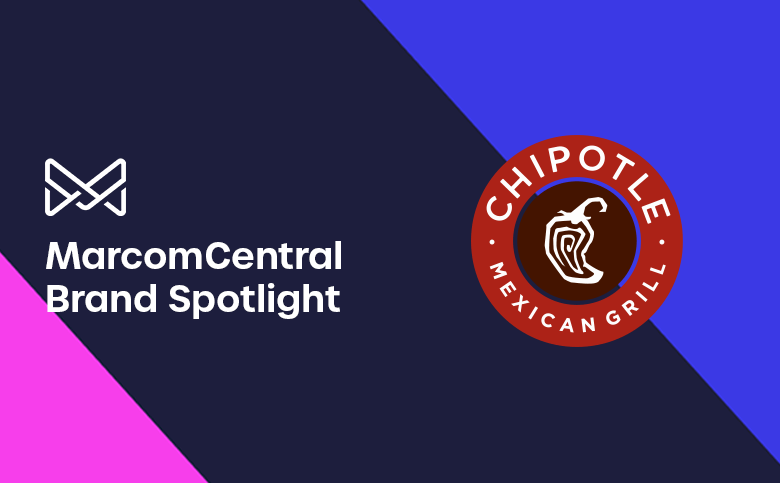
Authenticity Amplified: A Marketing Case Study of Chipotle
Given how popular Chipotle has become, it may be surprising to hear that its founder never intended to start a fast-casual restaurant chain empire. Steve Ells, Chipotle’s founder and former CEO, was a chef in San Francisco whose dream was owning a fine-dining restaurant. So, he opened a small burrito shop in Colorado as a stepping stone to fund the next restaurant. Yet something about that burrito shop resonated with customers.
Chipotle is committed to using real ingredients for freshly prepared meals while still offering the efficient service customers experience at competitors like Taco Bell or McDonald’s. A large part of the Chipotle brand is highlighting this value in its marketing. Learn more about what makes the company’s branding so successful in this Chipotle marketing case study.
How Chipotle Began
Ells’ idea for Chipotle came from his experience eating at burrito shops and taquerias in San Francisco while working as a chef in the city. These eateries were all over the Mission District in San Francisco but missing in Colorado. So, in July 1993, Ells remodeled an ice cream shop in Denver into the first Chipotle location.
Although a major goal of the first Chipotle was funding another restaurant, Ells also wanted to show customers that food could be served quickly but still use fresh ingredients. This approach served Chipotle well. Sales continued to increase a little every day, and Ells opened a second and third location in 1995 and 1996 respectively.
Today, Chipotle Mexican Grill boasts nearly 3,500 restaurants worldwide. In one of its most recent reports, Chipotle shared that its total revenue for the first quarter of 2024 was $2.7 billion, which represents a 14.1% increase compared to the first quarter of 2023. The company opened 47 new restaurants during the first quarter of 2024 with 43 locations, including a drive-thru Chipotlane.
Who is their target market?
Chipotle’s appeal stems from its use of fresh, high-quality ingredients. It’s in the name — Chipotle is a Nahuatl Aztec word that means smoke-dried jalapeno chili. The food chain draws from ingredients like these to prepare fresh and delicious-tasting food. On its website, Chipotle jokes that Chipotle is the only ingredient that’s hard to pronounce, suggesting customers can trust the freshness of its menu.
Chipotle is part of a growing number of fast-casual restaurants that target customers who enjoy the convenience of fast-food chains but want the ingredients of fine dining. At a fast-casual restaurant, customers get efficient service and freshly prepared food items at more affordable prices than they might at a sit-down restaurant.
Chipotle primarily targets a young demographic. For example, the first Chipotle location was strategically placed near the University of Denver campus, and Ells believes this helped increase sales in the fall of 1993 when the semester began. College students represent the ideal of this target market. These customers are busy with classes, coursework, jobs, and other activities but still want to eat healthier.
What Makes Chipotle’s Branding So Successful?
Chipotle has had an indelible impact on the wider restaurant industry. It’s ranked on the Fortune 500 and has been recognized on Fortune’s Most Admired Companies list, as well as Time Magazine’s Most Influential Companies. While Chipotle’s food has a lot to do with its great reputation, it’s not the only element contributing to its success. The Chipotle marketing strategy is also what sets the company apart.
Dedicated to the Customer Experience
Although fresh ingredients and fast service are at the core of Chipotle’s brand, the restaurant chain also recognizes that delivering a great customer experience involves multiple factors. With so many locations, it can be challenging to maintain a consistent experience at every location, but Chipotle achieves this through an intensive management system called the 39-point checklist.
Developed by former co-CEO Monty Moran, the 39-point checklist stems from the idea that well-run Chipotle restaurants are only possible with well-managed teams. As such, the 39-point checklist primarily assesses management teams. It covers the standard aspects like line speed and food quality and cost but also identifies potential negative trends within management.
The goal is to help managers improve their leadership skills. For instance, one aspect the checklist assesses is whether new employees receive the training and guidance they need for success. This system helps managers identify and avoid bad practices, which helps them train and motivate high-performing teams.
Chipotle also recognizes that delivering a good customer experience is all about the details. When customers enter a Chipotle location, they notice a minimalist design. Minimalism is gaining traction in many stores, but for Chipotle, it goes beyond a cost-savings design to be a visual depiction of its commitment to authenticity and transparency.
Similarly, Chipotle even curates the music it plays to create a unique atmosphere. The company hired DJ Chris Golub to create special playlists for Chipotle locations that contribute to the eating experience the brand wants to promote.
Authenticity
On the surface, Chipotle appears similar to many fast-food chains with fast service and more affordable prices. Yet, the focus on fresh, high-quality ingredients fosters authenticity that helps Chipotle stand out.
Chipotle highlights its values on the website, sharing that the brand came to be because of a belief in the connection between how food is prepared and its taste. The company emphasizes real food and that it’s Better for You, Better for People, and Better for Our Planet.
Chipotle shares how it uses only 53 ingredients that are easy to pronounce and invites customers to learn more about these ingredients. The restaurant chain was one of the first American brands to establish goals for using local and organic ingredients, as well as goals for using only responsibly raised meat. It also stresses common nutritional concerns like no added hormones, artificial flavors, or preservatives.
All these elements help cultivate greater authenticity. Chipotle builds trust among its customer base by sharing stories about its ingredients, indicating that customer nutrition is a primary concern.
Setbacks have also provided opportunities for Chipotle to express authenticity. Most notably, the restaurant chain came under fire after cases of E. coli and norovirus were traced back to Chipotle locations. Although these incidents tainted the brand’s reputation, it was able to recover strongly by reemphasizing food safety measures. On the website, customers can find comprehensive information about Chipotle’s food safety policies. The brand used a temporarily devasting incident to be transparent with customers and express its commitment to do better going forward.
A Mixed Marketing Model
Chipotle understands the key to a great marketing strategy is communicating with the target audience across multiple channels. As mentioned, Chipotle’s audience leans to the younger side, with Millennials and Gen Z accounting for nearly half of the target audience. The brand has leveraged multiple social media sites to connect with this audience, including Instagram, Twitter, and Snapchat. Chipotle’s presence is perhaps strongest on TikTok.
Currently, Chipotle boasts over 2 million followers on TikTok. TikTok offers a platform for Chipotle to engage younger audiences who may be averse to traditional advertising. The brand stayed on top of various TikTok trends to deliver timely and relevant content, plus created its own trends through branded hashtag challenges. TikTok also offered an opportunity to partner with influencers on different challenges.
In addition to boosting customer engagement, social media helps Chipotle share promotions like free burritos or discounts on certain menu items. Of course, the company also recognizes the value of more traditional marketing methods like TV advertising. TV advertisements focus on Chipotle’s authenticity, conveying the restaurant chain’s commitment to using real ingredients, being transparent about food preparation, and sharing testimonials from employees.
Notable Campaigns
From branded hashtag challenges showcasing the skills of employees to TV ads featuring celebrities getting real inside a giant burrito, Chipotle has produced several unique marketing campaigns. See specific ways the brand has engaged its audience over the years.
#LidFlipChallenge
Inspired by an employee known for their skill at assembling burrito bowls, Chipotle started a new TikTok challenge to raise awareness about a promotion.
In celebration of Cinco de Mayo, the company was offering free deliveries on online orders.
Chipotle called on Gen Z content creators who were fans of the brand to serve as ambassadors on TikTok. These creators helped ignite #LidFlipChallenge. It also enlisted help from influencer David Dobrik to increase the visibility of the challenge and promotion. Participating in the challenge was simple — it only required logging into TikTok and posting a video with a Chipotle burrito bowl to do their best attempt at the lid flip.
The impact of #LidFlipChallenge was undeniable. 110K videos were posted on TikTok within just the first six days of launch. The campaign also helped Chipotle break records with digital sales with increased app downloads and deliveries among the Gen Z target audience.
#GuacDance
Chipotle’s success on TikTok didn’t stop with #LidFlipChallenge. The company went on to create one of the highest-performing branded challenges on TikTok. For National Avocado Day, Chipotle asked fans to put their own spin on a viral dance to celebrate guacamole. This challenge also promoted Chipotle’s offer for National Avocado Day; it’s the one day the restaurant chain doesn’t charge extra for guac. Once again, Chipotle used the challenge as an opportunity to partner with TikTok influencers like Loren Grey to spread the message further.
#GuacDance generated 500 million impressions, and Chipotle experienced another record-breaking digital sales day. The challenge even gained visibility outside TikTok with online publications writing articles about the trend, increasing awareness.
As Real As It Gets
For TV advertising, Chipotle launched a campaign in 2017 called “As Real as It Gets” to highlight its commitment to using only real ingredients. The timely campaign came out shortly after the company announced its new tortillas used no preservatives or dough conditioners.
The ads featured various comedians going inside a giant burrito and sharing their desires, fears, and secrets. The idea was these comedians were “getting real” inside the burrito, and which burrito was better for this than one made with real ingredients? A humorous concept that communicated the message clearly.
Behind the Foil
Chipotle took a much different approach with Behind the Foil. Launched in 2019, these documentary-style ads showcased Chipotle employees hard at work preparing fresh ingredients for the busy day ahead. The ads provided a behind-the-scenes look at the real ingredients that help distinguish Chipotle from the competition. The campaign also emphasized Chipotle’s commitment to food safety.
Building off Behind the Foil, Chipotle launched another campaign as part of its recruitment marketing efforts. These ads are video testimonials from team members about the impact Chipotle has had on their lives. They provide a peek into the daily responsibilities of different team members. What’s more, since most of Chipotle’s employees fall into the Gen Z group, the brand intends to place more of these testimonials on social media sites.
Cultivate Foundation
Chipotle’s focus on fresh, real ingredients transfers over well to its community efforts. In 2011, the restaurant chain established the Chipotle Cultivate Foundation to put its commitment to making real food accessible to all people into action. The Cultivate Foundation provides grants to 501(c)3 non-profit organizations that align with Chipotle’s mission, such as Niman Ranch and The Nature Conservancy.
Chipotle also creates employee engagement through the Chip In and Dish Out initiatives. Aptly named, these extensions of the Chipotle Cultivate Foundation match eligible employee volunteer hours with a donation (Chip In) and eligible employee donations to a non-profit (Dish Out).
Beyond the benefits this program offers for the communities Chipotle serves, it also strengthens its overall message of the brand’s major selling points. Customers are reminded of the company’s values and how they distinguish themselves from other fast-food and fast-casual restaurant chains.
Sustainability
Real food isn’t just good for customers — Chipotle emphasizes it’s better for the planet as well. As part of its mission of serving Food with Integrity, Chipotle conducts sustainability reports that provide in-depth analyses of the company’s yearly initiatives. It covers key areas like food and animals, people, and the environment. Additionally, the report indicates goals achieved during the year and new objectives to work toward in the coming year.
These reports are a comprehensive example of the transparency Chipotle maintains with customers. They provide hard evidence about how it sources ingredients, efforts to operate more sustainably, and how it supports employees through development and inclusivity. Customers see how Chipotle’s marketing aligns with its efforts, increasing their trust in the brand’s messaging.
Advanced Technology Integrations
As Chipotle seeks to meet evolving customer expectations, it leverages digital innovations to boost efficiency. One such innovation is Chippy, an autonomous kitchen assistant that combines knowledge of culinary traditions with artificial intelligence to cook and season tortilla chips. The goal is to free up time for team members to focus on other, more productive tasks while ensuring customers receive the same delicious-tasting tortilla chips they’ve come to expect.
Chipotle also has plans to streamline the makeline through automation. In partnership with food service platform Hyphen, Chipotle is exploring an automated digital makeline that dispenses ingredients without assistance from a team member.
According to Chipotle, about 65% of all digital orders are for burrito bowls or salads. This automated system will free up time for employees to focus on the top makeline, making burritos, tacos, and similar items for the same digital order. The system should also increase a restaurant’s capacity for digital orders during peak business periods.
Ultimately, what these advanced technologies focus on is Chipotle’s other priority outside fresh ingredients — delivering efficient service. Innovations like these have the potential to boost customer experience considerably, both online and in the restaurant.
Enhance Your Marketing Strategy With MarcomCentral
When evaluating a brand that’s garnered such notoriety as Chipotle, businesses may wonder how it built such a great reputation. As this case study has shown, Chipotle’s marketing strategy is in large part responsible for this success. It communicates with its target audience across multiple channels, ensuring a consistent message about the value it provides to customers and how it stands out from fast-food chains.
Does your business want to realize the same level of success? Start with improving your marketing strategy. At MarcomCentral, businesses find a solution that drives sales in our full-service brand management and distributed marketing platform. Designed for businesses across industries, including food and beverage, our on-demand marketing platform centralizes brand management, automates workflows, simplifies customization even for dispersed teams, and ensures compliance with industry standards.
Explore more case studies from leading brands. To learn more about MarcomCentral, request a demo today.
